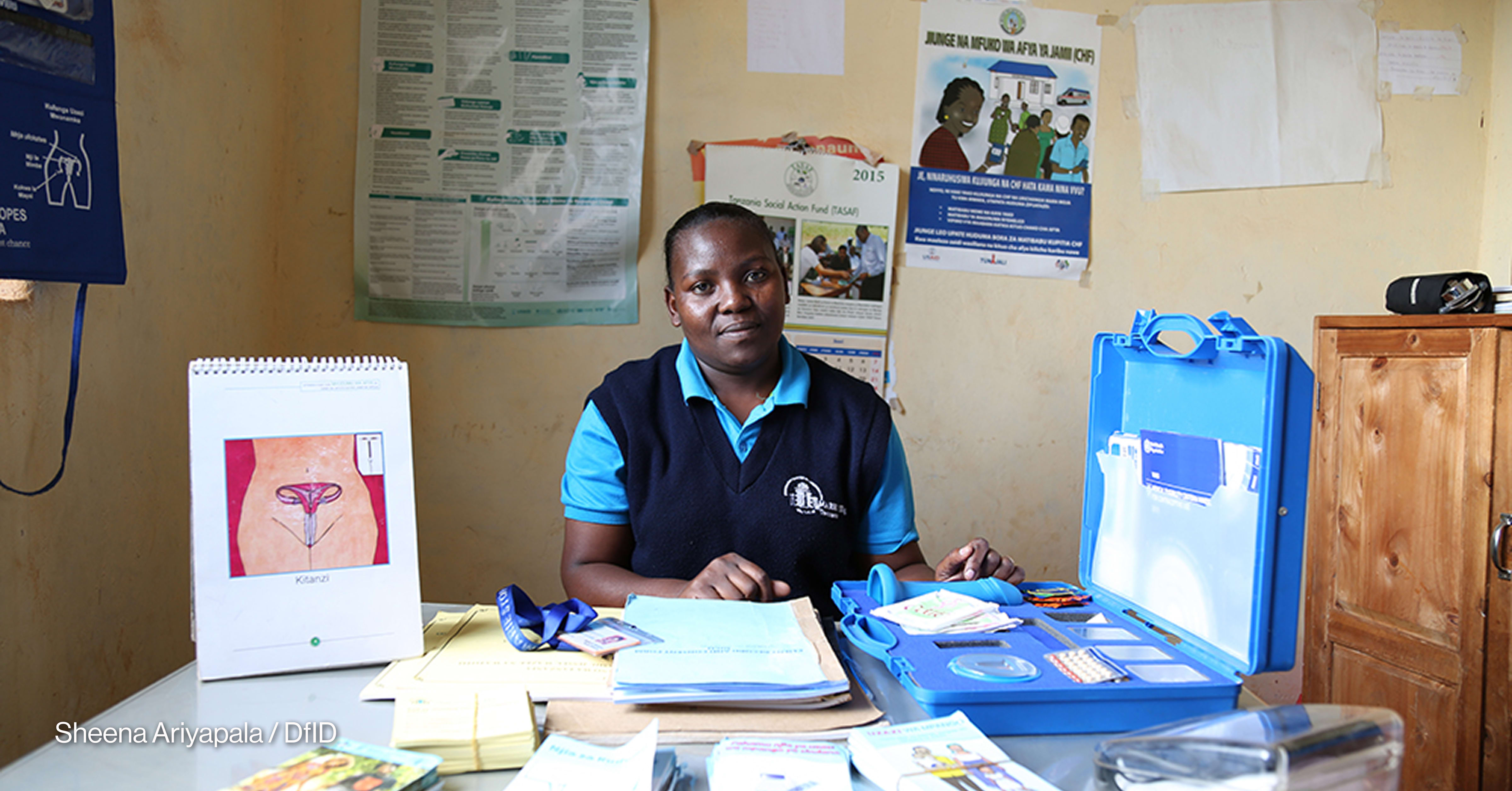
“Imagine a gender equal world. A world free of bias, stereotypes, and discrimination.” The leading lines of a manifesto for this year’s International Women’s Day campaign are undeniably ambitious. But for women’s health, a world free from gender bias can be broken down into one simple concept: Women must receive equal access to the same quality of health services as men, regardless of their social or economic status.
Currently, this is far from true. In many low- and middle-income countries, or LMICs, women are often less likely than men to have access to quality health services, essential medicines and vaccines, health insurance coverage, and appropriate health information. This disparity is particularly acute in rural or marginalized communities and, when related to sexual and reproductive health and rights, reflects the intersectionality of gender bias and other forms of discrimination.
Access to cervical cancer services exemplifies these inequalities. In 2018, 84% of the 569,000 cases of cervical cancer reported globally that year occurred in LMICs, along with at least 87% of the 311,000 cervical cancer deaths. That’s one death every two minutes.
As a fatal disease with an estimated 55% mortality rate globally — which is most likely to affect women at an age when they are mothers and carers — it is vital that cervical cancer is prevented to protect women, their families, and their communities from this devastating diagnosis.
Globally, more women now die from cervical cancer than from pregnancy-related causes, and this gap is only anticipated to widen without intervention.
—Inaction has consequences. It has been estimated that without adequate intervention, a woman in an LMIC will die every single minute from cervical cancer by 2050.
You can understand why, when considering these statistics, the World Health Organization has stated that “Few diseases reflect global inequities as much as cancer of the cervix.”
There are numerous reasons for these disparities. But to simplify: Cervical cancer is largely preventable, and women and girls in high-income countries, or HICs, are more likely than those in LMICs to be able to access the services required to prevent it.

Indeed, in 2019, 15% of age-eligible girls globally were fully vaccinated against cervical cancer’s main causal agent, HPV. Although over 85% of HICs had introduced HPV in their national immunization schedules by 2020, less than 30% of low- and lower-middle-income nations had done the same. Similarly, less than 40% of low-income countries had a national cervical cancer screening program in 2019, compared with over 80% of HICs.
This is a scandal, and without accessible and high-quality vaccination and screening, as well as public awareness to motivate uptake, the cervical cancer burden will unforgivably continue to fall on LMICs.
But despite the size and severity of the challenge, some things can — and must — be done to shrink the bias, and subsequent burden, faced by women in LMICs.
Valuing cervical cancer prevention
In 2020, WHO launched a global strategy detailing the steps and resources needed to eliminate cervical cancer as a public health problem. It estimated that $10.5 billion would need to be invested by 2030 to ensure that 90% of girls are fully vaccinated by age 15 and that 70% of women are screened for cervical abnormalities with a high-performance test by age 35 and again by 45.
Currently, only $120 million per year has been invested. Regardless of the pandemic, committing a fraction of the amount required to tackle cervical cancer reneges on the pledge all nations in the world made when they agreed to eliminate cervical cancer as a public health problem.
Undervaluing women’s health is not new or specific to cervical cancer. Despite women making up 70% of the global health workforce and contributing the equivalent of trillions of dollars annually through unpaid caregiving, as well as the indirect effects that maternal mortality has on children’s health and education levels, the importance of women’s health has often failed to be financially recognized. Through both moral and economic lenses, this has never, and will never, be acceptable.
Improved recognition of cervical cancer as an important aspect of SRHR could help change this.
Inclusion of cervical cancer within wider SRHR conversations is long overdue and is likely to open the disease area up to greater international funding and programmatic opportunities. Globally, more women now die from cervical cancer than from pregnancy-related causes, and this gap is only anticipated to widen without intervention. Research investigating the economic impact of women’s cancers could also see greater investment directed toward the disease area.
The consequences of insufficient investment are expected to have far-reaching and devastating effects on cervical cancer services. As the peaks of the disruption caused by the COVID-19 pandemic pass, public health bodies in countries with high cervical cancer burdens must be supported in the development and strengthening of sustainable and measurable cervical cancer prevention programs.
High-income nations should also use their influence in global forums and donor organizations to ensure synergies between cervical cancer as part of SRHR and health system strengthening — which donors are currently prioritizing — are capitalized on.
Making cervical cancer prevention accessible
Alongside investment to improve availability of cervical cancer prevention services, we must also prioritize access to these services.
There is currently considerable variation in uptake between and within nations that have cervical cancer screening programs, and this can largely be attributed to variation in screening accessibility.
For example, screening can be less accessible to women experiencing certain cultural and societal factors which are known to influence uptake of cervical screening. Women are less likely to be screened if they live in a rural setting, did not attend secondary education, have a low household income, or live in nations with low gender equality index values.
There are effective ways of accommodating these socioeconomic differences. Self-collecting a cervical sample can minimize barriers such as fear and shame and increase inclusivity in screening. WHO’s recent guideline update on cervical screening recommends this method to improve accessibility, and it is essential that program supporters and designers strive to help implement this approach.
Similarly, with HPV vaccination uptake, understanding is growing about the importance of comprehensive communication and social mobilization strategies to address concerns and improve understanding in parents, carers, teachers, and adolescent girls themselves.
Cancer Research UK is currently funding public health researchers in India to learn lessons from Southeast Asian nations and Indian states that have successfully introduced HPV vaccination programs. Interim findings evidence the effectiveness of engaging community health workers to provide tailored education sessions and ensure information is accessible to all. These findings, and others, will be shared with policymakers in India to strengthen the evidence base needed to design and implement a nationwide HPV vaccination program.
Breaking the bias
Empowering women, girls, and their families to engage with cervical cancer prevention services is as essential to reducing cervical cancer bias as providing financial support for the delivery of high-quality services.
By prioritizing cervical cancer prevention program funding and accessible service delivery, we will come one step closer to a gender-equal world, free from bias and the cervical cancer burden that comes with it. Women and girls don’t have time for any other alternative.








